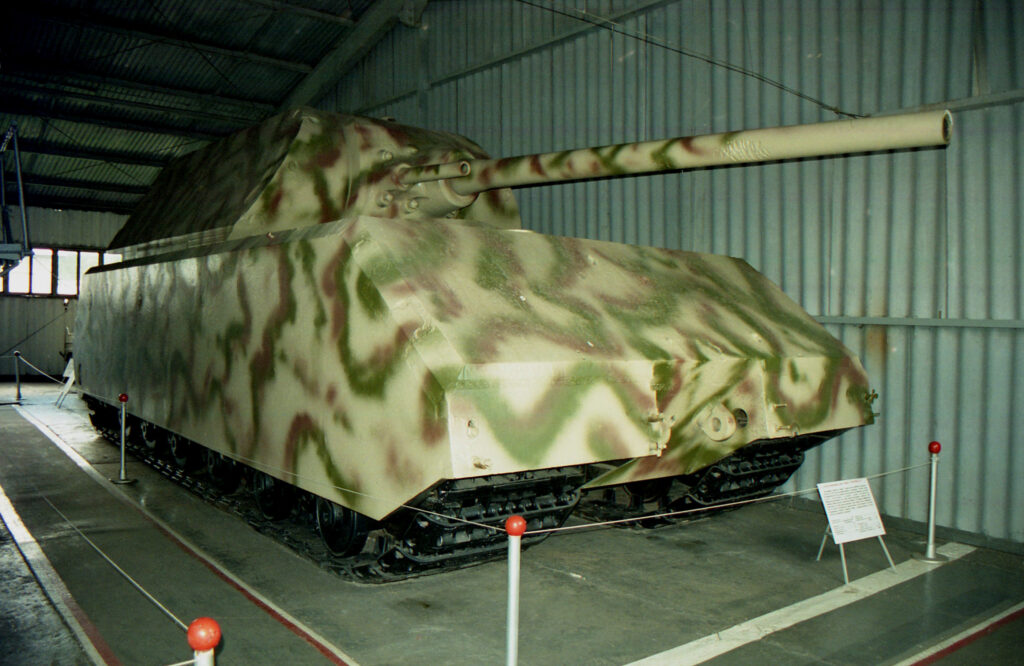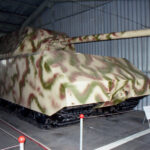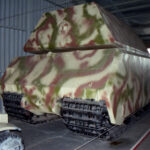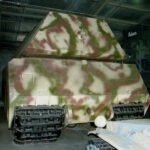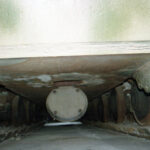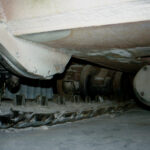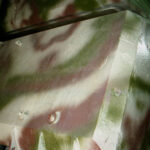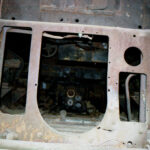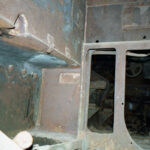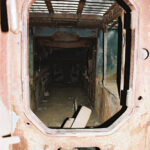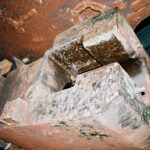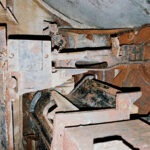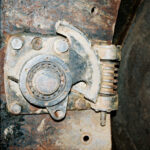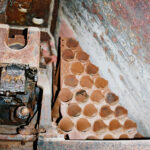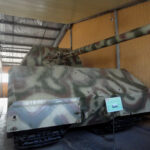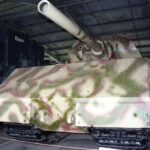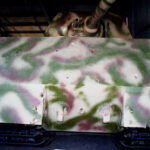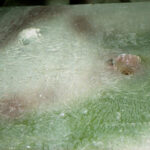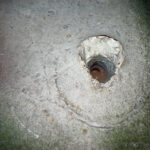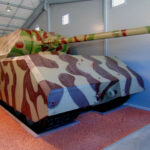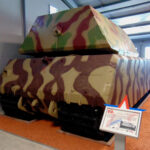Pavilion N 6 (the armored vehicles of Nazi Germany – Third Reich) Kubinka tank museum collection of the exhibits.
Panzer VIII German super heavy tank “Maus” (“Mouse”) produced in 1944 in small quantities – a top heavy World War II tank.
The tank was designed in 1944 and was produced in only 3 copies (two and a one prototype).
The Super heavy tank Pz.Kpfw VIII Maus photo gallery.
- “Mouse” general view (archive 2003)
- Rear view of the tank
- Mouse tank rear view (2002 archive)
- Chassis, wheels and bottom hatch
- Sprocket, rollers and tracks
- Original coupling of the rear armor plate with the side
- Mouse inside: torsion bars and empty engine compartment (2002 archive)
- Screws, nuts, fastening and rust
- Empty engine compartment (2005 photo)
- Gun breech, the chamber
- Gun wedge breech, top view
- Aiming mechanism
- Close-up of the turning mechanism
- Space for storing shells, ammunition
- Frontal Armor and Markings (2015)
- Maus front view (2003)
- Front armor and test marks (2003)
- There was artillery shelling
- Another attempt to break through the armor
To be continued soon..
The tactical and technical characteristics of “Maus” tank:
- The Weight -is 180 tons, the crew – 6 people.
- Overall the dimensions in mm (the length x width x height) – 10000 x 3710 x 3700.
- The Weaponry: N1 cannon – the caliber 128 mm., the ammunition – 25 shots.
- N2 cannon, the caliber – 75 mm., the ammunition – 28 shots.
- The machine gun – 2 pieces by a caliber – 7,92 mm.
- The armor protection: the front – 200 mm., the turret – 210 mm.
- Engine power is 1750 h/p, the Maximum speed — 25 km / h.
- The Cruising on the highway — up to 190 km.
- The under water driving OPVT system
Panzer VIII Mouse tank design features:
The Base is original, an overall layout – an engine mounted on the tank axis between the control area and the fighting compartment; the drive wheels are rear.
The Weapons: 128 mm caliber cannon is coupled with a 75 mm caliber gun and a machine gun; a sight is a periscope type; there is, in addition to mechanical, electromechanical a drive turret.
The Protection – a housing welded from the rolled plate sheets; a Chassis protected from the front and the sides by the 100 mm the screens.
Chassis: the special Engine (a modification of an aircraft type); a electromechanical power transmission; There are multi- roller track mover; the suspension spring; Average specific pressure of 1.4 kg / sm. 2.
Current condition, location and coloring of the Mouse tank
- Panzer VIII Maus WW2 German super heavy tank
- Note the different camouflage of the tank’s turret and hull
History. Today we know of only one surviving incomplete copy of the German super-heavy tank Panzerkampfwagen VIII, humorously but officially nicknamed “Maus” (in English – Mouse), which was in the collection of the Kubinka tank training ground. All other manufactured main parts of the Maus, the hulls and turrets, are considered irretrievably lost in Germany by the decision of either Adolf Hitler or the US/UK Allies, who sent these parts to be melted down. The fate of the engines and other important parts of the Maus, according to legend, taken from Germany to Leningrad, is considered unknown. After World War II, for a long time, Maus was outdoors in a certain part of the Kubinka shooting range, after his armor was tested for penetration by artillery shells and drilled with special test drills. Severe Russian winters and rains in spring and autumn caused the internal parts of the tank to develop slight rust. In 1972, this Maus, along with other old and new models of armored vehicles, was covered with hangars, which is considered the Day of the Foundation of the Tank Museum. The museum was part of a secret training ground and was intended for an official use only by a special category of visitors. After the collapse of the USSR, Kubinka training ground received “Perestroika”, global changes. By the order of the general, in the early 90s, in accordance with Soviet laws and traditions, the secret library was destroyed, as well as an archive containing all information about the place and methods of obtaining armored vehicles for the testing, its description and the test results of each instance. Thus, the history of almost all of the museum’s exhibits was lost, but the museum became accessible to civilians and even foreign citizens. In violation of the order, some archival materials were saved and distributed to private collections, and were also preserved in the memory of veterans of the Kubinka training ground and museum*. Using the preserved archives and information of the former tank museum, the Central Archive of the USSR Ministry of Defense, as well as foreign publications, official employees of the tank museum and volunteers compiled a rough history of the appearance of the Maus tank, its testing in Germany, delivery to the USSR and testing at the Kubinka training ground. Below we post the current version of former employees of the Kubinka Tank Museum, but we do not give a full guarantee of reliability, only as an option for future comprehensive research. For a long time, before the big reorganization of 2015, the Kubinka Tank Museum was a friend and brother of the Saumur Tank Museum in France, which has now become the technical site of the Patriot Park.

